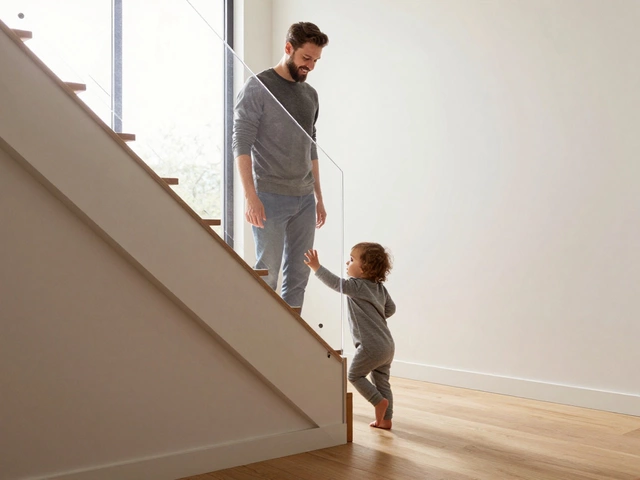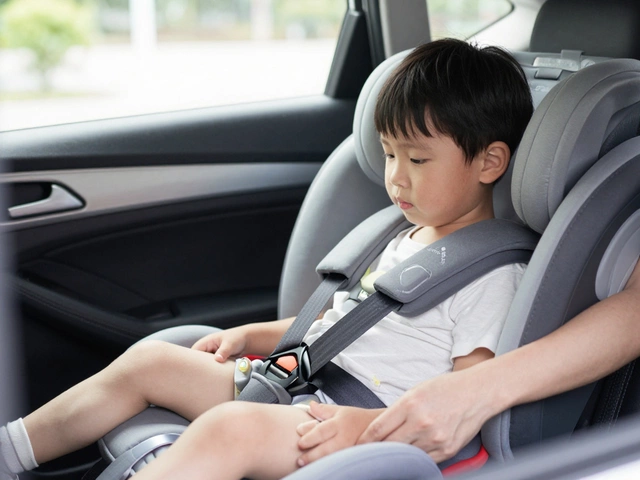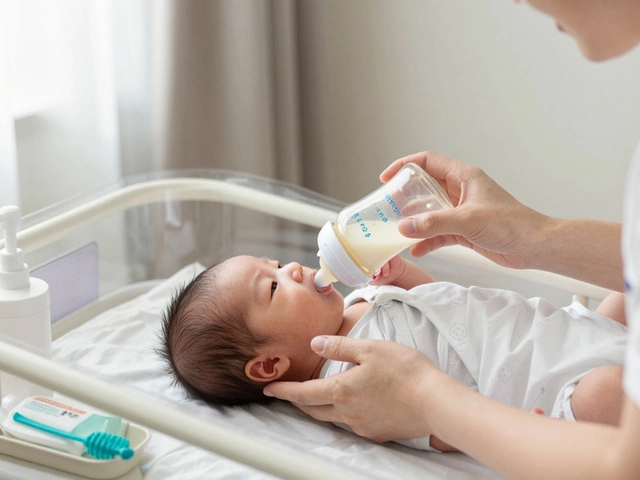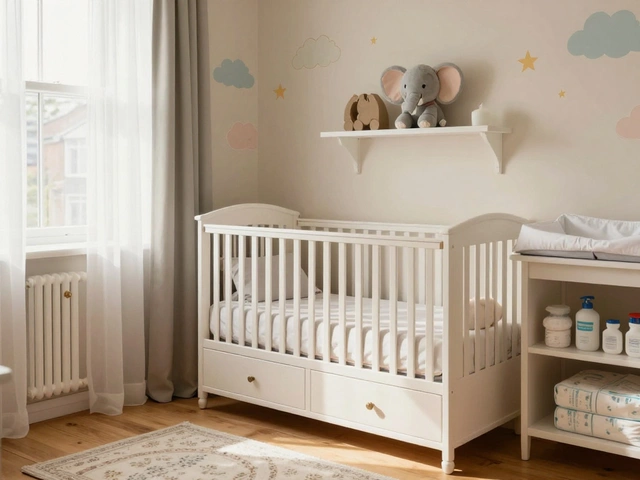
Find yourself sneaking peeks at the baby monitor way too often, or even sleeping with it glued to your pillow? You’re not alone. Most new parents wonder if it’s actually safe—or even healthy—to keep baby monitors turned on all the time. It feels like the obvious thing to do, especially when your nerves are shot and you need peace of mind. But does nonstop use come with any hidden downsides?
Let’s get clear about what’s really at stake. Sure, having your eyes and ears on your baby 24/7 sounds comforting, but there’s more to the story than just missing a cry. Baby monitors use Wi-Fi, radio waves, or other wireless tech. That alone brings up a few concerns about exposure and even sleep quality (yours and baby’s). On top of that, some parents say the constant noise or light from monitors can make it harder to get deep sleep—kind of ironic, right?
So, should that little screen or speaker stay powered up all night, every night? Or could you—and your baby—actually do better with a bit less surveillance? Spoiler: there’s no perfect answer, but there are some solid tips and things to consider before you pick a side.
- Why Parents Leave Monitors On
- Possible Downsides
- Safety and Health Considerations
- Tips for Smart Monitor Use
- When to Turn It Off
- Finding Your Balance
Why Parents Leave Monitors On
There’s nothing like the first time you bring your baby home and realize how unbelievably small and quiet they are. For a lot of new parents, leaving the baby monitor on all the time just feels like the safest choice. But there’s more to it than just basic worry. Let’s break down the reasons why most of us don’t hit that power button at night.
It mostly comes down to peace of mind. Most parents want to know instantly if their baby wakes up, coughs, or gets wiggly during the night. Monitors make it easy to check in without tiptoeing into the room and risking a midnight wake-up call (that dreaded squeaky floorboard!).
For families with larger homes, having the monitor on 24/7 is almost a necessity. If your room is on a different floor or far from the nursery, you can’t always hear every sound without some extra help. And these days, with tons of tech and smart monitors around, it’s tempting to tap into every alert—especially for parents of preemies or babies with reflux or breathing concerns.
- Parents of babies born prematurely or with health issues like reflux, sleep apnea, or heart concerns often use monitors nonstop for added safety.
- Monitors with video or breathing sensors offer features that boost a parent’s confidence, especially if they’ve had a previous scare or hospital stay.
- If you’ve got twins or more than one little one in separate rooms, constant monitoring helps keep tabs without running between rooms all night.
Plus, many monitors now have extra perks—like temperature alerts, movement notifications, and two-way talk—that make them feel irreplaceable for today’s connected parents.
| Reason | Percent of Parents (2024 survey) |
|---|---|
| Peace of mind/Reducing anxiety | 68% |
| House layout/distance from nursery | 41% |
| Health concerns for baby | 27% |
| Tech features (notifications, temperature, movement) | 22% |
It’s clear—parents love the bit of control and reassurance baby monitors bring. If you fall into this camp, you’re definitely not alone. But it’s worth thinking about when total coverage might be more habit than need, especially as your baby grows.
Possible Downsides
Leaving the baby monitor on around the clock sounds like a no-brainer when you’ve got a little one, but there are some real drawbacks you’ll want to know about before making it a habit.
First up, screen and sound fatigue. Monitors that use constant video or audio can actually mess with your ability to tune out background noise, making it tougher for parents to sleep well. Some folks end up jolting awake at every tiny sound—a baby cough, a car driving by outside—so instead of helping, you get even less rest.
There’s also the thing about electronic exposure. Audio monitors use radio frequencies, while video monitors often rely on Wi-Fi. Health groups, including the World Health Organization, say there’s not enough proof for major health risks from low-level radio frequencies, but ongoing 24/7 exposure is still a hot topic in parenting forums. Some parents report feeling uneasy about monitors sending out signals near their child’s sleep space all day and night.
Another small, but surprisingly common, downside is power use. Video monitors and Wi-Fi-based cameras need plugging in or frequent charging if you’re running them non-stop. This means more cords around the nursery, more trips to the outlet, and extra wear on batteries. Forget to charge, and you could end up with a dead monitor at the worst moment.
Finally, there’s the stress factor itself. Some parents notice that staring at a screen all night can ratchet up anxiety instead of calming it down. If you’re constantly checking on every tiny movement or squirm, it gets hard to switch off your brain and trust yourself.
- Interrupted sleep from constant low-level noise or notification sounds.
- Concerns about long-term exposure to radio frequencies or Wi-Fi signals nearby.
- Extra electricity costs or battery hassle with continuous use.
- Over-monitoring can amp up parental anxiety instead of easing it.
Knowing the actual flipside helps you weigh if keeping that monitor on all the time is really making things easier—or just adding a new set of headaches.
Safety and Health Considerations
If you’re thinking about running your baby monitor non-stop, you probably want to know if that’s actually safe. The good news is, most home baby monitors are made with safety in mind. They're supposed to help you, not add stress or health risks. Still, there are a few real things to watch out for.
First, let’s talk about electromagnetic fields (EMFs). Wireless monitors—especially the ones using Wi-Fi or DECT (Digital Enhanced Cordless Telecommunications)—emit low levels of EMFs. The World Health Organization says that, at common household exposure levels, there’s no clear evidence that EMFs from baby monitors are harmful. Most experts recommend keeping any wireless device, including a monitor, at least 3 feet from your baby’s crib, just to play it safe.
Noise is another biggie. Some monitors come with sensitive microphones or white-noise options, which can pick up every little sound all night long. If you’re hearing static, beeping, or constant background noise, that can mess up your sleep. Tired parents don’t make the best decisions, and their health can take a hit. If your monitor has a mute or low-volume setting, use it when you don’t need every peep broadcasted.
There’s also blue light. Video monitors usually have tiny LED screens or indicator lights. While they’re not as harsh as phones or tablets, watching a screen for hours or sleeping next to blinking lights can disrupt your sleep patterns. Try keeping the screen turned away or using sound-only mode at night.
- Keep monitors away from direct contact with the baby—avoid tucking cameras or cords inside the crib.
- Use night mode or dim the light on your monitor if it’s bright.
- Charge or plug in the monitor somewhere safe, where wires can’t be pulled or chewed by curious little hands.
One last thing: don’t forget about data privacy. Wi-Fi baby monitors can be hacked if you don’t use strong passwords or update software. Always set up security features and keep your lookouts private.
The takeaway here? Monitors are pretty safe, but use them wisely. Small tweaks can make a big difference for you and your baby’s health.
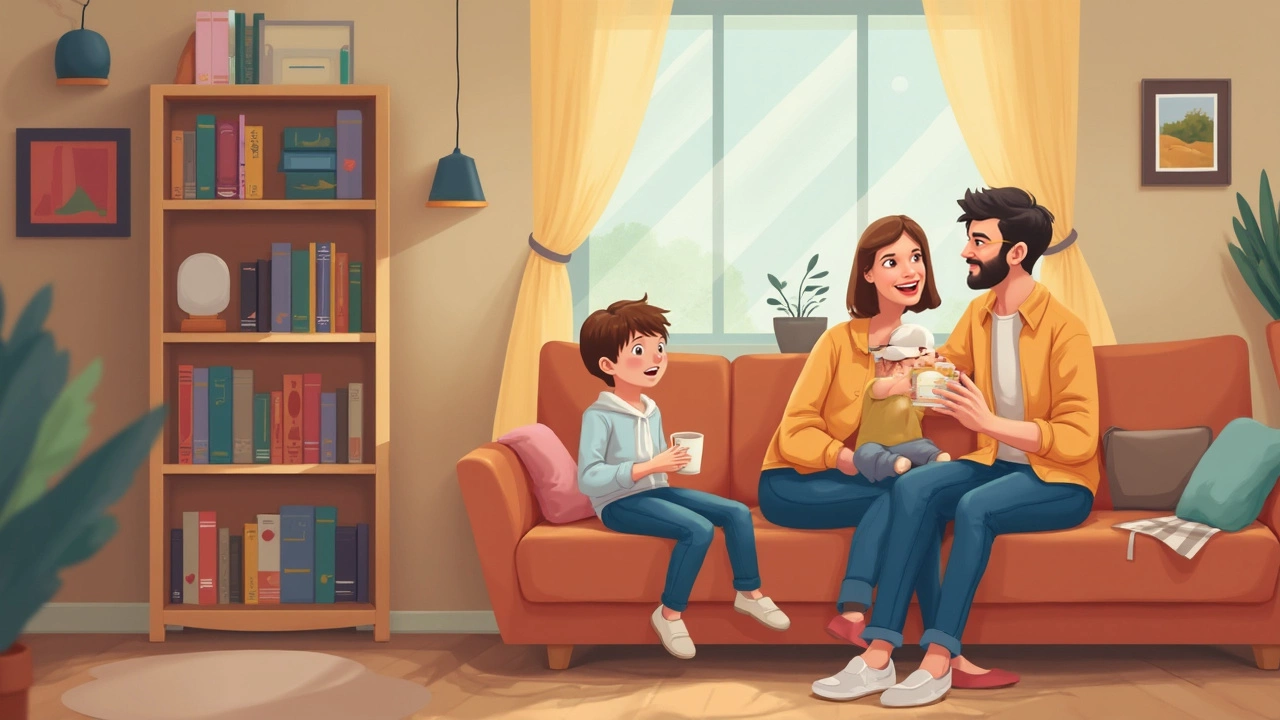
Tips for Smart Monitor Use
When it comes to baby monitors, a few smart habits can make a real difference—both for your baby’s comfort and your own sanity. Instead of just switching the device on and forgetting about it, try adopting a routine that works for your family and minimizes any potential risks.
Start with the basics: keep the monitor at least three feet away from where your baby sleeps. The American Academy of Pediatrics (AAP) points out that distance lowers both any electric and sound interference and reduces your baby’s exposure to electromagnetic waves. Wi-Fi monitors are everywhere now, but don’t forget to set up strong passwords and keep your app and device updated, since hackers sometimes target these gadgets.
- If your monitor has a VOX (voice activation) feature, use it. This setting keeps the monitor quiet until your baby makes noise, helping you avoid listening to white noise all night while still catching the important stuff.
- Dim the monitor’s screen if you’re using a video model. Blue light can mess with your sleep—yep, even adults. Most people don’t realize how much monitor screens can keep them up.
- Check power-saving settings. Some monitors let you mute the audio or switch to sleep mode when there’s no activity. This conserves battery and reduces distractions.
- Position the parent unit where you'll actually hear it if needed—but not right next to your pillow unless you’re expecting frequent wake-ups. A monitor blasting in your ear all night is a recipe for cranky mornings.
It’s also smart to test your signal before fully relying on a monitor. Walls, microwaves, and even Wi-Fi routers can zap your signal strength or cause interference. Doing a quick walk through your home while checking the live feed helps you find the best spots.
| Tip | What It Does |
|---|---|
| Keep monitor 3 feet from crib | Reduces exposure & sound feedback (AAP recommendation) |
| Use VOX mode | Limits unnecessary noise at night |
| Update device firmware | Protects against hacking risks |
| Adjust screen brightness | Helps everyone sleep better |
Don’t fall for the idea that louder or higher-definition equals safer monitoring. The best setup is one you can trust that won’t wear you out. Sometimes the strongest parenting move is turning down the volume and letting your baby monitor be a helper, not a stressor.
When to Turn It Off
There are moments when turning off your baby monitor is not just safe, but honestly pretty smart. For instance, experts at the American Academy of Pediatrics point out that once your baby hits six months and starts sleeping for longer stretches without waking, you might not need the monitor running all night. If your baby's room is just next door and you can hear them easily, the extra tech might be overkill.
Sometimes the constant noise or glow from a monitor messes with your own sleep. Light from screens can sneak into your room and disturb your rest—even low-level LED lights. So if you wake up feeling tired or anxious, consider switching it off once you know your baby is settled, or at least turning off the video and keeping the audio part on low. Some monitors also have a "mute" or "sleep mode" feature for these situations.
There are a few specific scenarios when you should definitely give the monitor a break:
- You’re physically in the same room as your baby—no need for a monitor while you’re both napping together or playing nearby!
- During the day if your baby’s nap spot is right within earshot and you don’t need the extra help.
- When your Wi-Fi or power is unreliable—in this case, you definitely don’t want to depend on a monitor alone. Go old school and check in person.
- If your older baby has developed a habit of waking up because of sounds or lights from the monitor itself.
Turning off the monitor occasionally can be a sanity booster for parents, too. It's easy to get a little obsessed and start checking in on every tiny noise. Taking short breaks helps you relax, trust yourself, and get better rest. Remember, a baby monitor should work for you, not stress you out!
Finding Your Balance
Let’s get real—there’s no magic setting or one-size-fits-all answer when it comes to leaving your baby monitor on all the time. Every family’s comfort zone and needs are a bit different. Some parents sleep better knowing they’ll hear every sound. Others find the constant alerts keep them on edge. The trick is making your monitor work for you, not stressing you out.
Experts like the American Academy of Pediatrics agree that using baby monitors can help prevent accidents, but it’s important not to rely on them completely. Monitors are supposed to give you peace of mind, not replace regular check-ins or safe sleep practices. If you’re losing sleep over every beep, it might be time to try a different approach.
Here’s a handful of ways to hit that sweet spot with your monitor use:
- Set volume and sensitivity just high enough to hear real needs, not every rustle or sigh.
- Try turning the monitor off once your baby is sleeping through the night, or set it only during nap and nighttime hours.
- If your room is close enough and you can hear your baby, just use the monitor as backup. Many parents find they need it less as their confidence grows.
- Use features like mute or screen-off mode to reduce unnecessary noise and light at night.
- If you worry about EMF exposure, position the monitor at least 6 feet away from your baby’s crib, as studies suggest this cuts down radiation fast.
Take a quick look at common pros and cons reported by real parents and baby tech reviews:
| Pros | Cons |
|---|---|
| Peace of mind for anxious parents | Can create extra anxiety or "monitor addiction" |
| Early alert to real emergencies | Background noise/disrupts sleep |
| Useful for larger houses or louder environments | Battery/power costs up to $40 extra per year |
| Helps with nap/bedtime transitions | Potential EMF exposure if placed too close |
No tech can cut out all the worries of parenting, but you can take pressure off by adjusting settings, checking distances, and relying less as you get to know your baby’s cries and patterns. In a nutshell: stay flexible. You'll figure out the right balance for you, and it's totally okay if that changes over time.


